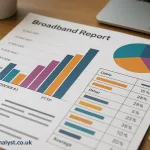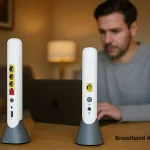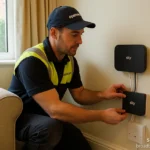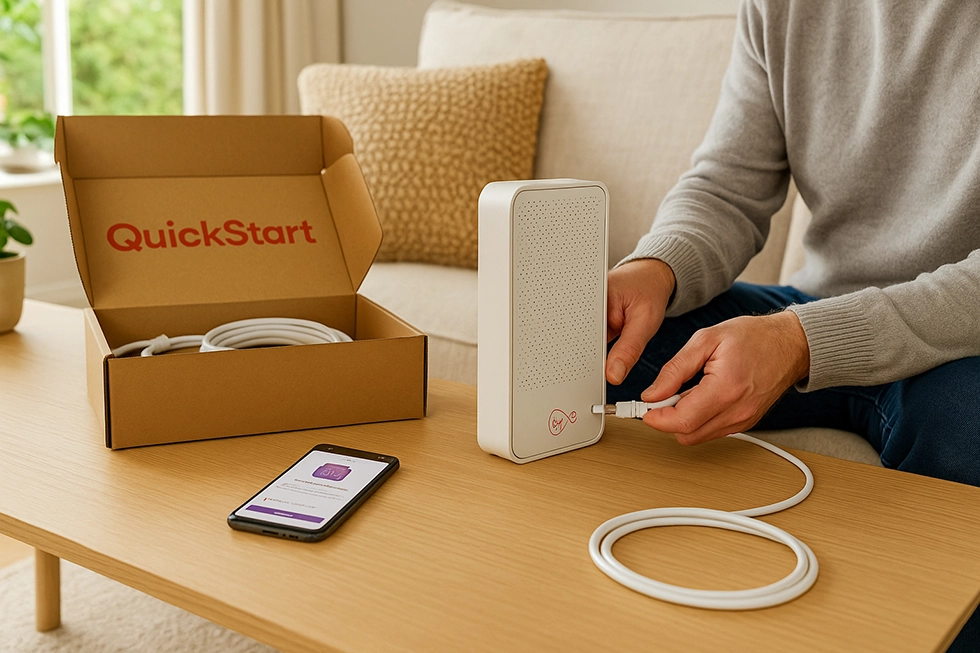Ookla has just released a detailed analysis based on data from millions of speed tests conducted via Speedtest.net. The report focuses on a persistent issue across the broadband sector: the mismatch between advertised broadband speeds and the real speeds customers experience in their homes.
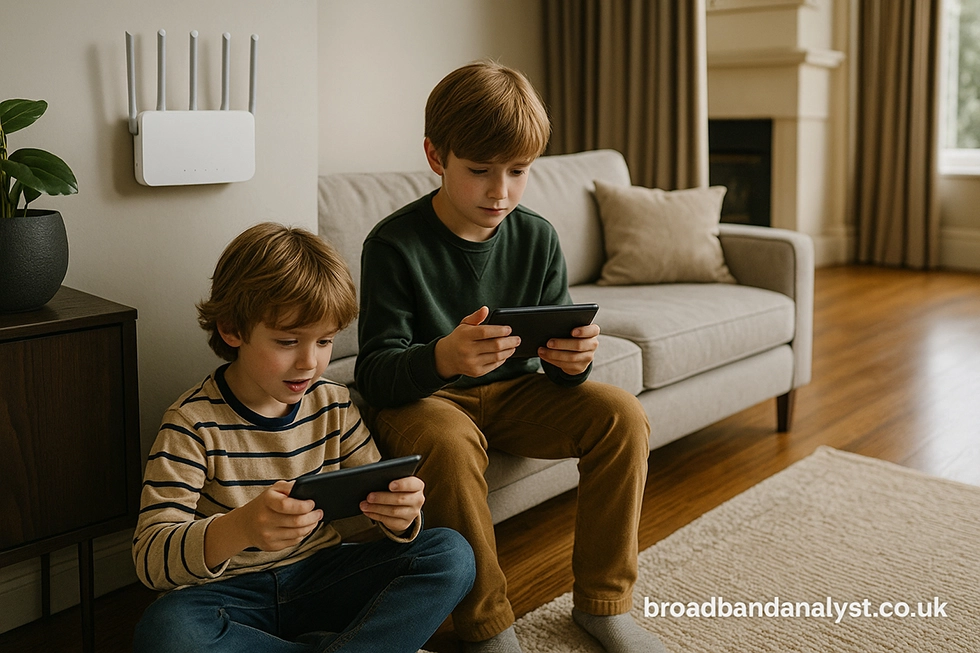
While broadband infrastructure continues to improve—particularly with wider full fibre availability—actual user performance remains varied. The study attributes much of this variation to the in-home Wi-Fi environment, highlighting how household setup often limits the potential of high-speed broadband packages.
Speed Performance by Tier
To make comparisons easier, Ookla grouped Wi-Fi speeds into three simple tiers:
- Speeds of 30Mbps or higher
- Speeds of 100Mbps or higher
- Speeds of 250Mbps or higher
These thresholds reflect meaningful levels of performance. The 30Mbps mark is typically enough for standard household usage such as HD streaming and video calls. 100Mbps and 250Mbps represent higher tiers, suitable for households with multiple users or demanding use cases like 4K streaming, cloud backups, or online gaming.
UK Performance at Different Speed Levels
The United Kingdom’s performance in the Q1 2025 results sits mid-table globally. Across UK households:
- 92% experienced download speeds of at least 30Mbps over Wi-Fi
- 45% reached 100Mbps or more
- Just 24% achieved speeds of 250Mbps or higher
These figures suggest that while basic broadband performance is widely available, only a minority of users are benefiting from very fast connections in practice. That doesn’t necessarily mean high-speed services aren’t available, but rather that users may not be subscribed to them, or their home networks aren’t delivering the full potential.
Experienced Broadband Speed Tiers over Wi-Fi – Q1 2025
| Country | Users with Maximum Speed on Wi-Fi | ||
|---|---|---|---|
| 30Mbps | 100Mbps | 250Mbps | |
| United States | 94% | 73% | 55% |
| Canada | 94% | 66% | 47% |
| Spain | 92% | 56% | 37% |
| Japan | 95% | 51% | 29% |
| Brazil | 91% | 45% | 27% |
| United Kingdom | 92% | 45% | 24% |
| Taiwan | 87% | 44% | 24% |
| UAE | 84% | 38% | 17% |
| Germany | 86% | 38% | 13% |
| Saudi Arabia | 81% | 35% | 13% |
| Italy | 87% | 34% | 17% |
| Philippines | 80% | 33% | 12% |
| Australia | 80% | 27% | 7% |
| Mexico | 79% | 26% | 5% |
| India | 86% | 20% | 2% |
| Indonesia | 62% | 5% | 0% |
Source: Opensignal – Data collected from 1st January to 31st March 2025
Fewer Users Reaching Higher Speeds
Most countries in the dataset showed strong coverage at the entry-level 30Mbps tier. However, performance dropped significantly at the 100Mbps and 250Mbps marks. Even in markets with widespread fibre deployment, fewer users consistently reached these thresholds over Wi-Fi.
In countries like the US, Canada and Spain, more than half of users hit 100Mbps speeds. By contrast, the UK’s 45% figure places it behind those leaders, though still above countries like Germany, Australia, and India. At the 250Mbps level, just 24% of UK users reached that threshold—similar to Brazil and Taiwan, but far below the US (55%).
This suggests that, across markets, faster broadband doesn’t always equate to better real-world performance. That disconnect is largely due to how users connect to their broadband inside the home.
Having Fibre Doesn’t Always Mean Faster Speeds
When we compare the actual availability of fibre and cable infrastructure against how many users experience very fast speeds over Wi-Fi, the gap becomes clearer.
For example, the UK has 51% FTTP (full fibre) coverage and an additional 32% served by cable (mainly Virgin Media). Despite this, only 24% of users experience Wi-Fi speeds of 250Mbps or more.
Contrast that with the United States, which shows both high cable and fibre availability, and where 55% of users achieve 250Mbps+ over Wi-Fi. Countries like Taiwan and Spain also show more alignment between network availability and experienced performance.
This tells us that access to infrastructure alone isn’t enough. The consumer’s chosen plan, router setup, and home network configuration matter just as much when it comes to speed experience.
Broadband Infrastructure vs. Wi-Fi Speed Performance – Q1 2025
| Country | Broadband Access Infrastructure | % of Users Achieving 250Mbps on Wi-Fi | |
|---|---|---|---|
| % Fibre (FTTP/B) | % Cable | ||
| United Arab Emirates | 98% | – | 17% |
| Taiwan | 97% | – | 24% |
| Spain | 96% | – | 37% |
| Brazil | 94% | – | 27% |
| Mexico | 93% | – | 5% |
| Indonesia | 91% | – | 0% |
| United States | 88% | 30% | 55% |
| Philippines | 85% | – | 12% |
| Japan | 85% | – | 29% |
| India | 83% | – | 2% |
| Canada | 82% | 34% | 47% |
| Saudi Arabia | 68% | – | 13% |
| Australia | 52% | 34% | 7% |
| United Kingdom | 51% | 32% | 24% |
| Germany | 36% | 36% | 13% |
| Italy | 33% | – | 17% |
Source: TeleGeography Country Statistics & Opensignal (Q1 2025)
What’s Slowing Wi-Fi Down in UK Homes?
Even when fast broadband is available and subscribed to, the final bottleneck is often the Wi-Fi network inside the house. Device limitations, router age, building layout, and interference from other devices all affect how fast a user’s connection feels in real use.
Ookla’s analysis shows that in the UK:
- 23% of user tests were run on devices using Wi-Fi 4
- 57% on Wi-Fi 5
- 20% on Wi-Fi 6
This is important. Wi-Fi 4 (also known as 802.11n) is over a decade old and not built to support modern gigabit speeds. Even Wi-Fi 5 (802.11ac), while still common, doesn’t offer the low latency and high throughput of Wi-Fi 6. Wi-Fi 6E and Wi-Fi 7 adoption remain extremely limited as of Q1 2025.
In other words, unless a household has a modern router and compatible devices, much of the potential from a fast full fibre or cable connection is lost before it reaches the device.
Home Gateways and Wi-Fi Speed Experience – Q1 2025
| Country | % on Wi-Fi 5 or Newer | Households with Link Speed 100Mbps+ | Households with Broadband Speed 100Mbps+ |
|---|---|---|---|
| United States | 81% | 94% | 73% |
| Canada | 83% | 96% | 66% |
| Spain | 59% | 69% | 56% |
| Japan | 63% | 84% | 51% |
| Brazil | 43% | 62% | 45% |
| United Kingdom | 77% | 91% | 45% |
| Taiwan | 58% | 82% | 44% |
| United Arab Emirates | 57% | 71% | 38% |
| Germany | 68% | 87% | 38% |
| Saudi Arabia | 47% | 74% | 35% |
| Italy | 59% | 78% | 34% |
| Philippines | 43% | 64% | 33% |
| Australia | 70% | 90% | 27% |
| Mexico | 37% | 57% | 26% |
| India | 53% | 71% | 20% |
| Indonesia | 15% | 35% | 5% |
Source: Opensignal – Data collected from 1st January to 31st March 2025 (Q1 2025)
Wi-Fi Setup and Speeds
Another important metric is link speed—the maximum connection rate between the router and the user’s device. In the UK, 91% of households had a link speed of at least 100Mbps, and 77% of users were on Wi-Fi 5 or newer. However, only 45% of households actually reached 100Mbps broadband speeds in practice.
This further illustrates the gap between infrastructure capability and user outcome. In some cases, users may be on plans that don’t offer fast speeds. In others, the router or home layout may be limiting throughput. The result is often that users don’t get the speeds they pay for—or expect.
Faster Plans Don’t Always Deliver Faster Speeds
It’s tempting to assume that signing up for a 500Mbps or 1Gbps plan guarantees fast performance, but this isn’t always the case. Many homes still use basic routers, rely on default ISP-provided hardware, or connect devices in ways that introduce bottlenecks—like using Wi-Fi at long range or through multiple walls.
Even in homes with high-end connections, older devices or poor placement of access points can prevent full-speed usage. Upgrading to Wi-Fi 6 or Wi-Fi 7-capable routers and mesh systems, combined with wired connections where possible, is often the only way to see the benefit of ultrafast broadband packages.
The Bottom Line: You Need Both Fast Fibre and Good Wi-Fi
The UK has made significant progress in rolling out full fibre networks. But to close the gap between advertised speeds and actual user experience, broadband providers and consumers alike must focus on what happens inside the home. This includes better awareness of Wi-Fi technology, improved hardware, and network setups that reflect modern usage needs.
Policymakers and ISPs also need to ensure that broadband performance metrics reflect not just advertised speeds but the real end-to-end experience. Until that happens, high-speed networks alone won’t guarantee high-speed results.
By focusing on both infrastructure and in-home technology, the industry can start to close the gap between promise and performance—and deliver broadband that truly lives up to its potential.
